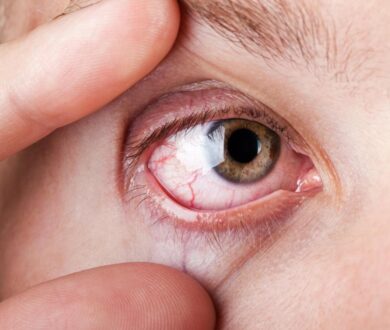What is Sicca syndrome? Learn all about its definition, symptoms, causes and treatment options. It is an autoimmune disease, also known as Sjogren syndrome that classically combines dry eyes, dry mouth, and another disease of connective tissue such as rheumatoid arthritis (most common), lupus, scleroderma or polymyositis.
Sicca is a word derived from the Latin siccus, meaning “dry.” Dryness of the exocrine glands, particularly the eyes and mouth, is referred to as “sicca syndrome” or “sicca complex” when there is no evidence of autoimmune disease present.
The syndrome is named after the Swedish ophthalmologist Henrik Samuel Conrad Sjogren (1899-1986) who, after seeing a woman of middle age with the disease, collected 19 such cases and in his doctoral thesis in 1933 delineated the syndrome. Sjogren’s thesis was not considered of sufficient importance to earn him the title of “docent”, denying him a career in academic medicine. The syndrome he discovered nonetheless came to be accepted around the world.
While sicca symptoms occur in the vast majority of Sjögren’s patients, not everyone with these symptoms has Sjögren’s. Because of this, it is important to establish an autoimmune cause for the dryness. Sometimes other causes may be found, such as radiation therapy to the head, certain medications, or Hepatitis C or HIV infections. If no cause is found, the patient should be followed carefully for possible Sjögren’s because it sometimes takes years for the diagnosis to become clear. There is a great preponderance of females. About 90% of Sjogren syndrome patients are female, usually in middle age or older.
The main risk factor for the development of Sjögren’s syndrome is being a member of a family that is already characterized as having autoimmune illnesses. This does not mean that it is predictable that a member of a family with known autoimmunity will develop the disease only that is more likely than if there were no family members with known autoimmunity.
Sicca syndrome Symptoms
The main symptoms of sicca syndrome are one or more of the following:
• Dry eyes
• Dry mouth
• Joint pain, swelling and stiffness
• Swollen salivary glands particularly the set located behind your jaw and in front of your ears
• Skin rashes or dry skin
• Vaginal dryness
• Persistent dry cough
• Prolonged fatigue
Sicca syndrome Causes
Sicca syndrome is an autoimmune disorder. This means that your immune system mistakenly attacks your body’s own cells and tissues. Scientists aren’t certain why some people develop Sicca syndrome and others don’t. Certain genes put people at higher risk of the disorder, but it appears that a triggering mechanism such as infection with a particular virus or strain of bacteria is also necessary. The genetic background of Sicca syndrome patients is an active area of research. The illness is sometimes found in other family members. It is also found more commonly in families that have members with other autoimmune illnesses, such as systemic lupus erythematosus, autoimmune thyroid disease, type I diabetes, etc. Most patients with Sicca syndrome are female. While the exact cause of Sicca syndrome is not known, there is growing scientific support for genetic (inherited) factors.
Sicca syndrome Diagnosis
Diagnosing sicca syndrome is complicated by the range of symptoms a patient may manifest, and the similarity between symptoms of sicca syndrome and those of other conditions. Also, patients who have symptoms of sicca syndrome approach different specialities regarding their symptoms which make the diagnosis difficult. Since the symptoms of this autoimmune disorder such as dry eyes and dry mouth are very common among people, and mostly observed from the age of 40 and above, it is often mistaken as age-related, thus ignored. However, some medications can also cause symptoms that are similar to those of sicca syndrome. The combination of several tests, which can be done in a series, can eventually lead to the diagnosis of sicca syndrome. Here are few tests that are done during diagnostic approach;
• Blood tests
• The Rose Bengal test
• Schirmer’s test
• ESR (Erythrocyte Sedimentation Rate)
Sicca syndrome Treatment
Sicca syndrome treatment depends on the symptom or cause. There’s currently no cure for Sicca syndrome, but there are treatments that can help relieve the symptoms.
Drugs such as pilocarpine (Salagen) and cevimeline (Evoxac) can increase the production of saliva, and sometimes tears. Side effects may include sweating, abdominal pain, flushing and increased urination. If you develop arthritis symptoms, you may benefit from nonsteroidal anti-inflammatory drugs (NSAIDs) or other arthritis medications. Prescription eye drops may be needed if over-the-counter drops aren’t helpful. Yeast infections in the mouth should be treated with antifungal medications.
Treat system wide symptoms. Hydroxychloroquine (Plaquenil), a drug designed to treat malaria, is often helpful in treating Sjogren’s syndrome. Drugs that suppress the immune system, such as methotrexate, also may be prescribed.
 Health & Care Information
Health & Care Information



